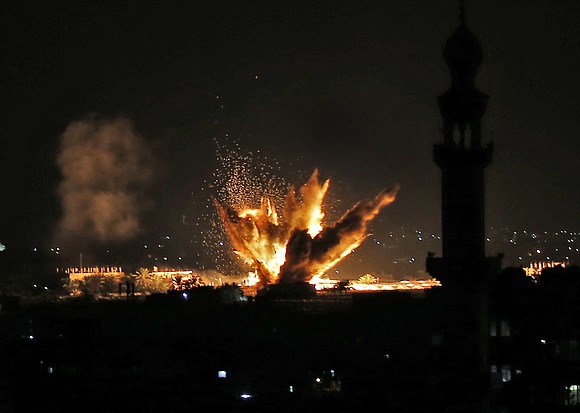Biggest Israel-Gaza firefight since 2014 ends in ceasefire
CNN/Stylemagazine.com Newswire | 11/13/2018, 1:17 p.m.
By Oren Liebermann, CNN
(CNN) -- A renewed ceasefire between Israel and Palestinian militants in Gaza has brought an end to the most severe round of fighting between the two sides since the 2014 war.
Palestinian factions, including Hamas and Islamic Jihad, announced the ceasefire in a joint statement. "The resistance will abide by the ceasefire agreement as long as the Israeli occupation adheres to the Egyptian-brokered truce," it said.
Egypt and the United Nations had been working to bring a halt to hostilities along and around the Gaza border since Monday evening.
The Israeli Prime Minister's Office did not comment on the ceasefire reports, in line with its response to previous restorations of the ceasefire.
In the largest and longest exchange of hostilities since the 2014 war, Gaza militants fired some 400 rockets into Israel on Monday and into Tuesday, while the Israeli military struck more than 100 targets inside the coastal enclave.
Hamas, the militant group that runs Gaza, said the escalation was retaliation for a secret Israeli operation inside Gaza that was unmasked on Sunday, ending in a bloody exchange of fire.
Seven Palestinians were killed in the Israeli strikes, according to the Palestinian Ministry of Health. One person was killed in Israel when a rocket hit a residential building in the southern city of Ashkelon, Israel's emergency response service, Magen David Adom, said.
The mayor of Ashkelon said the dead man was a Palestinian from the West Bank city of Hebron. He was the first person to die in Israel from a rocket strike from Gaza since the 2014 war.
Dozens of others were injured, mostly from shrapnel.
Rocket fire continued into Tuesday afternoon, as red-alert sirens sounded along the Gaza periphery, warning of incoming fire. More than 100 rockets were intercepted by Israel's Iron Dome aerial defense system, while many others have landed in open fields. Some rockets have evaded interception, landing in cities like Ashkelon and Sderot.
By Tuesday, the Israeli military said it had carried out more than 100 strikes on Hamas and Palestinian Islamic Jihad targets in Gaza, including weapons storage and manufacturing sites, command and control centers, and other targets. It also targeted what the military called "strategic assets," including al-Aqsa TV, a Hamas-run news channel that Israel has long accused of spreading misinformation and inciting Palestinians to attack Israelis.
The latest round of hostilities began Sunday evening when Israeli special forces entered Gaza as part of what the IDF called "operational activity." Hamas' armed wing accused Israel of carrying out an assassination attempt.
In the ensuing exchange of fire, an Israeli officer and a Hamas military commander were killed, as well as six other Palestinians. Israel denied the operation was an assassination attempt, describing it instead as part of a "broad, continuous and dedicated" effort.
Since the beginning of large-scale protests along the Gaza border in late March, there have been multiple rounds of hostilities, often in sharp escalations. But none of these extended beyond 24 hours before the ceasefire was restored.
Divisions within Israeli Prime Minister Benjamin Netanyahu's cabinet over the ceasefire restoration emerged almost immediately. Defense Minister Avigdor Liberman and Education Minister Naftali Bennett both issued statements making clear they had opposed the Prime Minister's push for a truce in a six-hour Security Cabinet meeting Tuesday.









